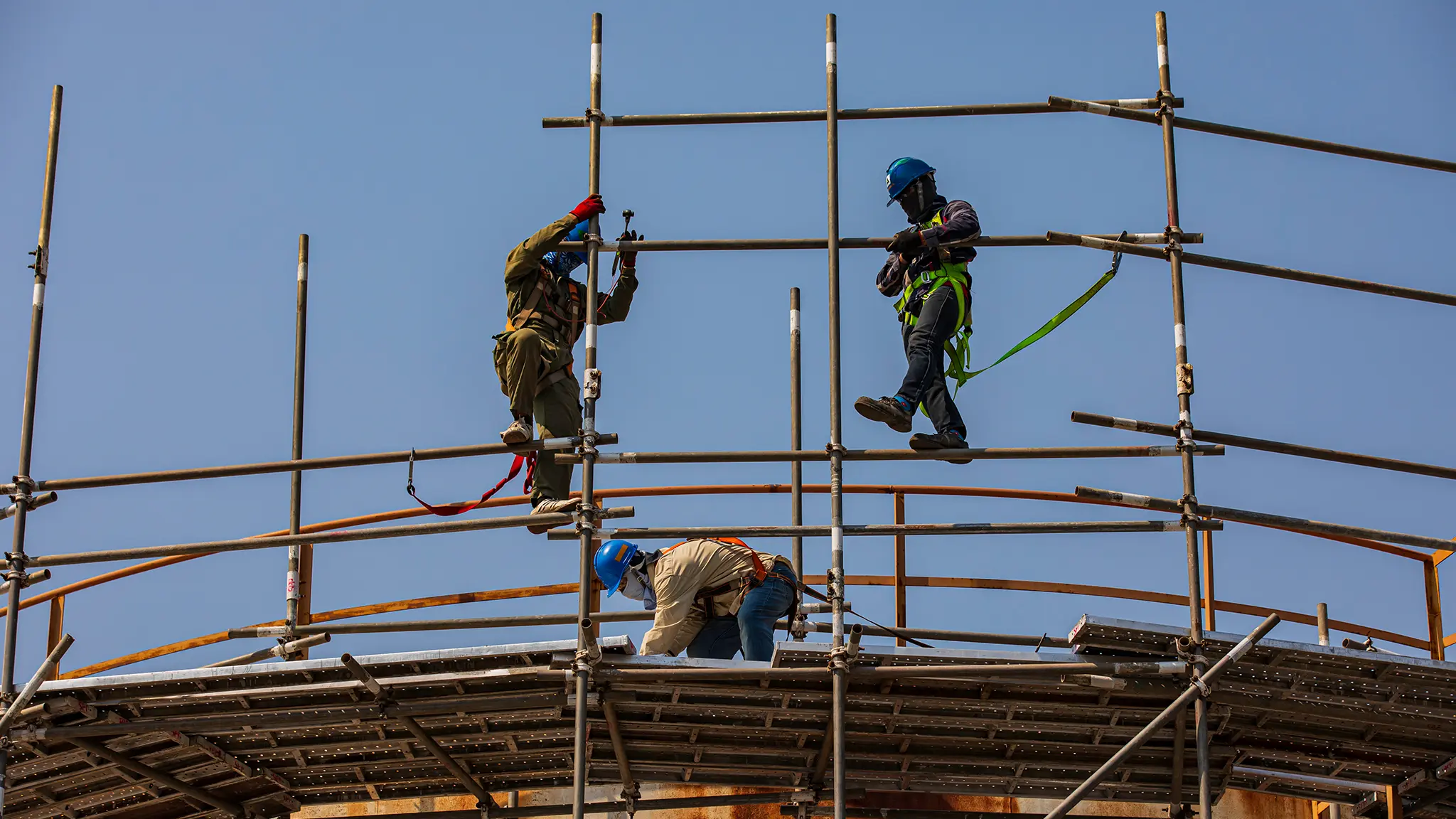Working at height is a common and high-risk activity in many sectors. It is extremely important to choose the right safety equipment to minimize these risks and ensure the safety of workers.
Working at height is a basic requirement in many industries. In many areas such as construction, maintenance and cleaning, workers must reach high points safely. However, this type of work is fraught with serious dangers and can cause serious injuries or even death if proper safety precautions are not taken.
Safety equipment when working at heights is critical to protecting workers' lives and minimizing risks. However, there are many different options on the market and choosing the right equipment can be a complicated process.
Things to Consider When Choosing Security Equipment
- Working Height: Different safety equipment is required at different heights. For example, if you are working at a height of less than 2 meters, a seat belt may be sufficient. However, if you are working at higher altitudes, you will need additional equipment such as a full body harness and lanyard.
- Working Environment: You need to consider the hazards of your work environment. For example, if you work in an environment with sharp edges or falling objects, you need to wear a hard hat to protect your head and goggles to protect your eyes.
- User's Comfort: It is important that safety equipment is comfortable and does not restrict the user's movements. An uncomfortable piece of equipment can distract workers and cause accidents.
Products Offered by EKSED
EKSED offers the widest range of products for your safety while working at height. Our products include:
- Seat belts: Various seat belt models are available for different working heights and environments.
- Lanyards: Lanyards with different lengths and connection options are used to stop falls.
- Shock Absorbers: It reduces the risk of injury by absorbing the sudden force that occurs during a fall.
- Carabiners: Offering different connection options, carabiners are used to connect seat belts and lanyards.
- Retractable Fall Arresters: These are systems that stop falls and allow the user to climb back up.
- Ropes: Ropes in different thicknesses and lengths specially produced for working at height.
- Anchors: Fixed attachment points used to attach seat belts and lanyards.
- Mobile Fall Arresters: They are portable and easy-to-use fall arrest systems.
- Rope Grippers: It ensures that the ropes are stored neatly and safely.
- Bags & Accessories: Various bag and accessory options to carry and store safety equipment.
- Tripod and Rescue Cranes: Equipment used for rescue and emergency operations.
- Pulleys It is used to change the direction of ropes and lift loads.
- Helmets Various helmet models to protect the head against impacts and falling objects.
- Safety Nets Nets used to protect from falling objects and people.
Factors to Consider to Determine the Best Safety Equipment for Working at Height
1. Choosing the Right Work Safety Equipment: The first step is to evaluate your job and working conditions. What type of altitude do you work at? What kind of dangers might you encounter? Answering these questions will help you determine the specific equipment you will need.
For example, if you are working on a construction site, personal protective equipment such as safety belts and ropes may be essential requirements. On the other hand, if you work on a telecommunications tower, special equipment such as climbing gear and safety vests may be required.
2. Prioritize Quality: Quality is of vital importance in occupational safety equipment. Quality equipment is long lasting and more reliable. Therefore, make sure that the equipment you choose complies with international standards.
3. Ergonomics and Ease of Use: Employee comfort and ease of use should also be considered. Especially for those working at height for long periods of time, equipment with ergonomic design should be preferred. Additionally, it is important that equipment is easily adjustable and usable, so workers can ensure their safety without wasting time.
4. Education and Awareness Raising: Choosing the best safety equipment is just one step. It is also critical that workers learn to use this equipment correctly and act in accordance with safety procedures. Training and awareness programs promote a culture of occupational safety and prevent accidents.
5. Periodic Checks and Maintenance: It is important to regularly check and maintain the equipment you choose. If any damage or wear is detected, the equipment must be replaced or repaired immediately. This is a vital step to continually ensure the safety of workers.
The Difference of EKSED
- More than 20 years of experience
- Wide range of products
- Quality and reliable products
- Competitive prices
Take Steps for Your Safety Work at Height with the Right Equipment
Working at height is an activity that carries serious risks and it is important to use appropriate safety equipment. In conclusion, working at height is a serious activity that requires careful planning and selection of the right equipment. Take steps to ensure your safety and work with the right equipment. Evaluate your job and working conditions, invest in quality equipment, pay attention to ergonomics and ease of use, provide training and awareness, and carry out regular checks. Take steps for your safety and do whatever is necessary to ensure a safe work environment.



 by
by